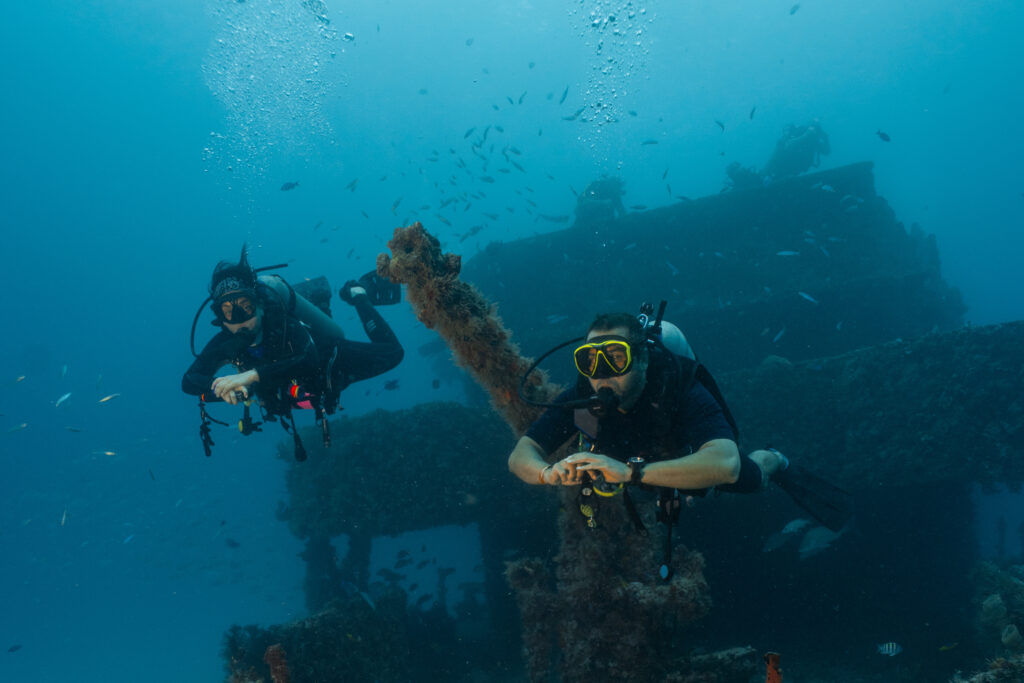What is Vasoconstriction?

Vasoconstriction is the process by which blood vessels narrow due to the contraction of muscular walls in the vessels, primarily small arteries and arterioles. This biological phenomenon is significant in regulating blood flow and blood pressure throughout the body. For scuba divers, understanding vasoconstriction is crucial because it directly impacts how their bodies react to the underwater environment, including the cold temperatures and increased pressure that are often encountered during a dive.
What is Mixed Gas?

Mixed gas, in the context of scuba diving, refers to breathing gases other than air, which are used to extend bottom time, reduce decompression obligations, and manage the risks associated with deep diving. These mixtures can include combinations of oxygen, nitrogen, helium, and other inert gases, tailored to specific diving conditions and depths. By using mixed gases, divers can safely reach greater depths and explore environments that would otherwise be inaccessible due to the limitations of breathing air alone.
What is a Scuba Diving Hood?

A scuba diving hood is a critical component of diving gear, designed to protect divers’ heads from the cold and various underwater hazards. It plays a crucial role in maintaining body temperature during dives in colder waters, thereby enhancing the overall diving experience and safety. Typically made from neoprene or other insulating materials, the hood covers the head and neck, leaving the face exposed or partially covered. Its primary function is thermal insulation, but it also provides some protection against marine life and minor abrasions.
What is Off-Gassing?

Off-gassing, within the context of scuba diving, refers to the process by which dissolved gases, primarily nitrogen, are expelled from a diver’s body during ascent. This phenomenon is crucial for diver safety, particularly in avoiding decompression sickness, commonly known as “the bends.” Understanding off-gassing is essential for divers to manage their ascents properly and ensure that the nitrogen absorbed under pressure is released gradually and safely.
What is Hydreliox?

What is Hydreliox? Hydreliox is a specialized breathing gas mixture composed of hydrogen, helium, and oxygen. It is primarily used in the field of deep-sea diving to enable divers to reach extreme depths that would otherwise be unmanageable with conventional air or other gas mixtures. Hydreliox has become crucial in extending the operational limits of […]
Can you get Hypothermia when Scuba Diving?

Can you get Hypothermia when Scuba Diving? Hypothermia is a medical condition characterized by a drop in the body’s core temperature below its normal range, which can occur during activities in cold environments, such as scuba diving. In the context of scuba diving, hypothermia poses significant risks to divers and can lead to serious complications, […]
What is Immersion Hypothermia?

Immersion hypothermia occurs when the body’s core temperature drops significantly due to prolonged exposure to cold water. This condition is particularly relevant to scuba divers, who often spend extended periods in environments where the water temperature can quickly lead to substantial heat loss. Understanding immersion hypothermia is crucial for divers, as it can lead to severe health consequences if not promptly recognized and treated.
What is Freediving?

Freediving, also known as breath-hold diving or apnea, is an underwater activity that involves diving without the aid of scuba equipment or artificial breathing apparatus.
What is Cyanosis?

Cyanosis refers to a bluish discoloration of the skin and mucous membranes caused by an insufficient level of oxygen in the blood. This condition can signal underlying health issues, particularly those related to respiratory and circulatory systems. In scuba diving, cyanosis is a critical indicator that a diver might be experiencing hypoxia, a dangerous reduction in oxygen levels. Recognizing and understanding cyanosis is vital for ensuring diver safety, as it can be a precursor to more severe conditions if not promptly addressed.
What is a Deco Mix?

Decompression mix, or deco mix, is a specialized gas mixture used in scuba diving to facilitate safer and more efficient decompression during ascent. Decompression is a critical phase in diving where accumulated inert gases, primarily nitrogen, are safely expelled from a diver’s body to avoid decompression sickness (DCS). Deco mixes are tailored to optimize the elimination of these gases, particularly during deep or prolonged dives where standard air might not suffice. Understanding and correctly using deco mixes can significantly enhance a diver’s safety, reducing the risk of DCS and other diving-related ailments.
